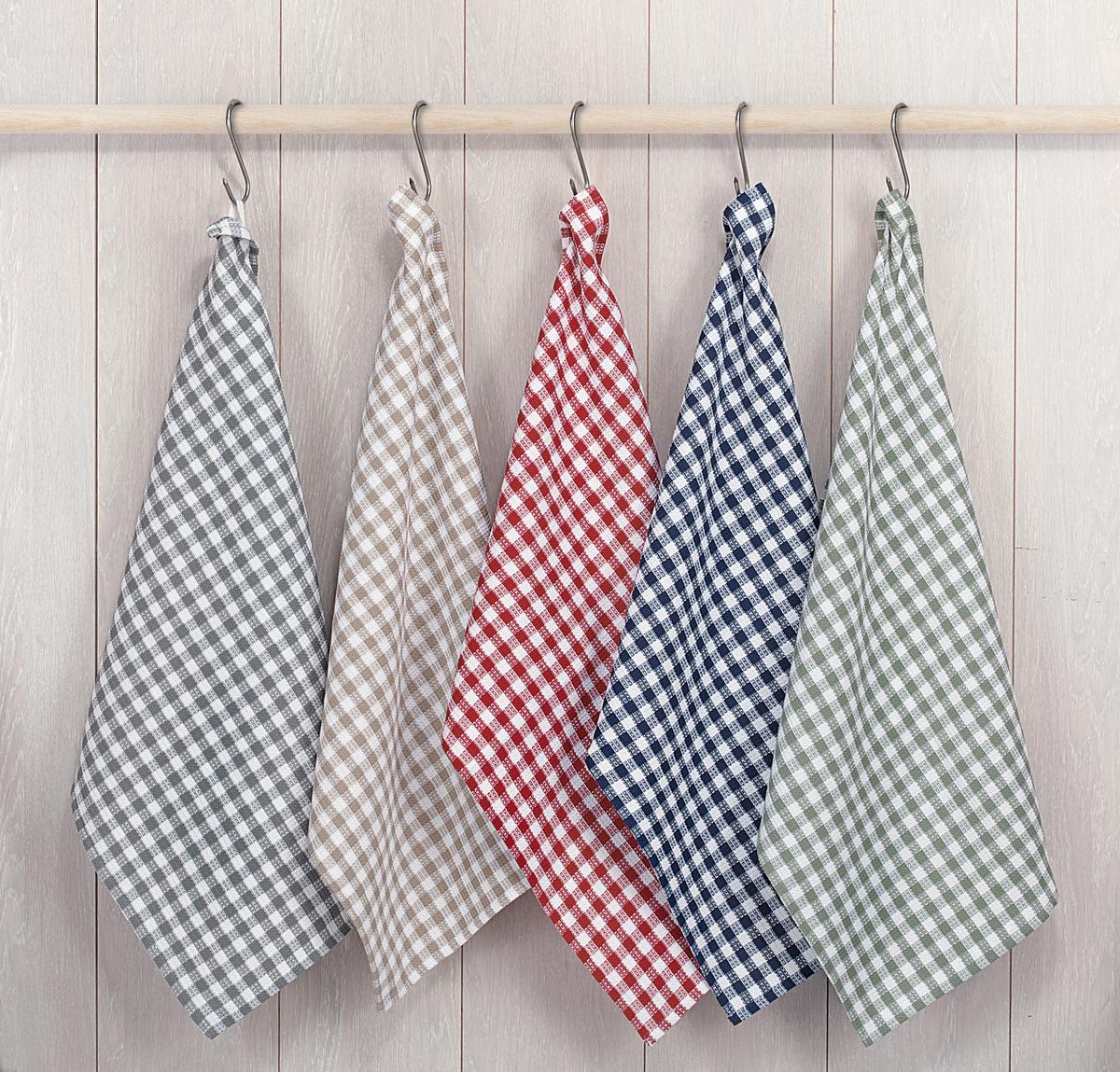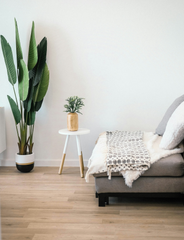Kitchen Towel Decor: Adding Color and Personality to Your Culinary Space
Welcome to the world of kitchen towel decor, where functionality meets style and creativity! Your culinary space deserves more than just ordinary towels hanging by the sink. By adding color and personality to your kitchen towel decor, you can transform this humble necessity into a vibrant and eye-catching element of your cooking haven.
In this blog post, we will explore the different types of kitchen towels available, as well as share some creative ideas on how to infuse them with delightful pops of color that reflect your unique taste. Whether you're a seasoned chef or an aspiring home cook, these tips will help you make a statement in your kitchen while keeping it practical and inviting.
So let's dive into the colorful world of kitchen towel decor and discover how simple touches can truly elevate the heart of your home!
What are kitchen towels?
Kitchen towels are a staple in any kitchen, serving multiple purposes beyond just drying dishes. These versatile pieces of fabric come in various sizes and materials, designed to meet different needs in the culinary space.
One common type of kitchen towel is the dish towel, which is typically made from absorbent cotton or linen. Dish towels are perfect for wiping down countertops, drying hands, and tackling spills with ease. They often feature colorful patterns or designs that can add a touch of style to your kitchen decor.
Another popular type of kitchen towel is the tea towel. Often made from lightweight cotton or linen, tea towels are known for their softness and durability. They are commonly used for drying delicate glassware and china or as decorative accents when draped over oven handles.
For heavy duty tasks like handling hot pots and pans, oven mitts provide an essential layer of protection. These heat-resistant gloves are usually made with thick padding on one side to shield your hands from burns while cooking.
Apart from practical uses, kitchen towels can also be employed as decorative elements within your culinary space. Hanging them on hooks or racks adds visual interest while keeping them easily accessible when needed.
In essence, kitchen towels are much more than simple tools for cleaning up messes they're functional accessories that bring both utility and personality to your cooking haven.
Types of kitchen towels
When it comes to kitchen towel decor, there are various types of towels you can choose from to add a pop of color and personality to your culinary space. Here are some popular options:
1. Terry Cloth Towels: These towels are known for their absorbency and durability. They have a soft texture and are great for drying dishes or wiping countertops.
2. Microfiber Towels: Made from synthetic fibers, microfiber towels are extremely effective at cleaning and absorbing liquids. They leave no streaks behind, making them ideal for glassware or stainless steel surfaces.
3. Flour Sack Towels: These lightweight cotton towels have a loose weave that allows them to dry quickly. They are versatile and can be used for anything from drying hands to straining yogurt.
4. Decorative Tea Towels: If you want to add a touch of style to your kitchen, decorative tea towels come in an array of patterns, colors, and designs. Hang them on hooks or display them on the oven handle for a charming aesthetic.
5. Paper Towel Alternatives: Consider eco-friendly options such as bamboo or linen reusable paper towel alternatives that not only reduce waste but also bring elegance to your kitchen decor.
6.Dishcloths : Dishcloths often have textured surfaces that make them perfect for scrubbing pots and pans without scratching the surface.
It's also easy washable
With these different types of kitchen towels available in the market, you can mix and match according to your needs while adding flair to your cooking space!
What are some creative ways to add color to your kitchen towel decor?
When it comes to adding color to your kitchen towel decor, the possibilities are endless. One creative way is to choose towels in vibrant, bold hues that complement your existing kitchen color scheme. Opt for shades like sunny yellow, fiery red, or calming teal to instantly inject personality into your culinary space.
Another idea is to experiment with patterns and prints. Look for towels adorned with whimsical polka dots, playful stripes, or charming floral designs. These patterns can bring a touch of fun and visual interest to your kitchen.
If you're feeling crafty, consider DIY tie-dyeing techniques or fabric painting to create unique and one-of-a-kind designs on plain white towels. This allows you to customize the colors and patterns according to your personal taste.
In addition, don't forget about texture! Adding textured kitchen towels such as waffle-weave or jacquard can add depth and dimension while still incorporating color into your decor.
Think beyond just hanging the towels on hooks or rods. Consider using them as accents by folding them neatly over oven handles or displaying them in decorative baskets on countertops. This not only adds pops of color but also serves as functional decor elements.
By exploring these creative ways of adding color to your kitchen towel decor, you can transform an ordinary item into a stylish statement piece that enhances the overall aesthetic of your culinary space.
How do you choose the right type of kitchen towel for your space?
When it comes to choosing the right type of kitchen towel for your space, there are a few factors to consider. First and foremost, think about the functionality you need from your towel. Do you primarily use towels for drying dishes or wiping down countertops? If so, look for towels made from absorbent materials like cotton or microfiber.
Next, consider the style and design of your kitchen. Are you going for a modern, minimalist look or do you prefer something more traditional and cozy? The color and pattern of your towel can add a pop of personality to your culinary space. Opt for bright colors if you want to make a bold statement, or choose neutral tones that blend seamlessly with your existing decor.
In addition to functionality and style, durability is also an important factor when selecting kitchen towels. Look for towels that are made from high-quality materials and have reinforced stitching to ensure they can withstand regular use and washing without fraying or losing their shape.
Don't forget about size! Consider how large or small you prefer your kitchen towels to be based on what tasks you'll be using them for most frequently.
Choosing the right type of kitchen towel involves considering functionality, style, durability, and size to find the perfect fit for your culinary space.
How to decorate your kitchen with kitchen towels
Decorating your kitchen with kitchen towels is a simple and cost-effective way to add color and personality to your culinary space. With so many options available, you can easily find towels that match your style and complement the overall aesthetic of your kitchen.
One creative way to decorate with kitchen towels is by using them as accents. Hang colorful or patterned towels on hooks or towel bars for an instant pop of color. You can also fold them neatly and display them in a decorative basket or on open shelves.
Another idea is to mix and match different types of kitchen towels. Play around with textures, patterns, and colors to create an interesting visual display. For example, pair a striped towel with a floral one for a fun and eclectic look.
If you have limited counter space, consider using towel rings or hooks attached to the side of cabinets or walls. This not only provides easy access to your towels but also adds visual interest when displayed in this unique way.
Don't forget about functionality when choosing kitchen towels for decoration. Opt for high-quality materials that are durable and absorbent. Consider factors such as size, thickness, and texture based on your specific needs in the kitchen.
Decorating your kitchen with colorful and stylish kitchen towels is an excellent way to infuse personality into this essential space in your home. By mixing different textures, patterns, and colors while considering functionality, you can transform mundane dish-drying into an opportunity for creativity!
How to choose the right kitchen towel for your needs
When it comes to choosing the right kitchen towel for your needs, there are a few factors to consider. First and foremost, think about what you will be using the towel for. Are you primarily going to use it for drying dishes or wiping countertops? This will help determine the absorbency and durability you need in a kitchen towel.
Next, consider the material of the towel. Cotton towels are popular because they are soft and absorbent. However, microfiber towels have also gained popularity due to their ability to quickly absorb moisture and clean surfaces effectively.
Another important factor is the size of the towel. If you have limited storage space in your kitchen, opt for smaller-sized towels that can easily be folded and stored away when not in use.
Think about aesthetics. Choose a kitchen towel that complements your existing décor or adds a pop of color to your culinary space.
Don't forget about maintenance. Look for towels that are machine washable and easy to care for so that they can withstand frequent use without losing their quality.
By considering these factors purpose, material, size, aesthetics, and maintenance you can choose the perfect kitchen towel that meets all your needs while adding style and functionality to your culinary space!
Kitchen towels are a practical and versatile accessory that can add color and personality to your culinary space. With various types of kitchen towels available, you have plenty of options to choose from when it comes to decorating your kitchen.
To add color to your kitchen towel decor, consider opting for vibrant patterns or bold hues that complement the overall theme of your space. You can also mix and match different colors and designs for a playful and eclectic look.
When selecting the right type of kitchen towel for your needs, consider factors such as absorbency, durability, and ease of cleaning. Cotton towels are a popular choice due to their softness, absorbency, and ability to withstand frequent use.
In terms of decoration ideas, you can hang kitchen towels on hooks or racks near your cooking area for easy access while adding visual interest. Another option is folding them neatly in baskets or arranging them in decorative bowls on countertops or shelves.
Remember that functionality should not be compromised when decorating with kitchen towels. Choose ones that are suitable for drying dishes or wiping countertops efficiently.
By incorporating these simple yet effective tips into your kitchen decor, you can infuse color and personality into the heart of your home without compromising on practicality.
So go ahead let those vibrant kitchen towels take center stage!
Frequently Asked Questions (FAQs)
Can I use any type of kitchen towel for decorating my kitchen?
While you can use various types of kitchen towels, it's best to choose durable ones made of materials like cotton or microfiber for both functionality and decor.
How can I prevent kitchen towel colors from fading over time?
To prevent color fading, wash your kitchen towels with similar colors, avoid using bleach, and opt for a mild detergent.
Are there specific patterns or colors that work best for kitchen towel decor?
The choice of patterns and colors depends on your kitchen's theme and your personal preference. Consider options that complement your existing decor.
Can I use kitchen towel decor in a small kitchen?
Absolutely! Kitchen towel decor can be particularly effective in small kitchens, as it adds color and personality without taking up much space.
How often should I replace my kitchen towels for decor purposes?
Replace them when they show signs of wear and tear or when stains become difficult to remove. This typically occurs every few months to a year, depending on usage.


